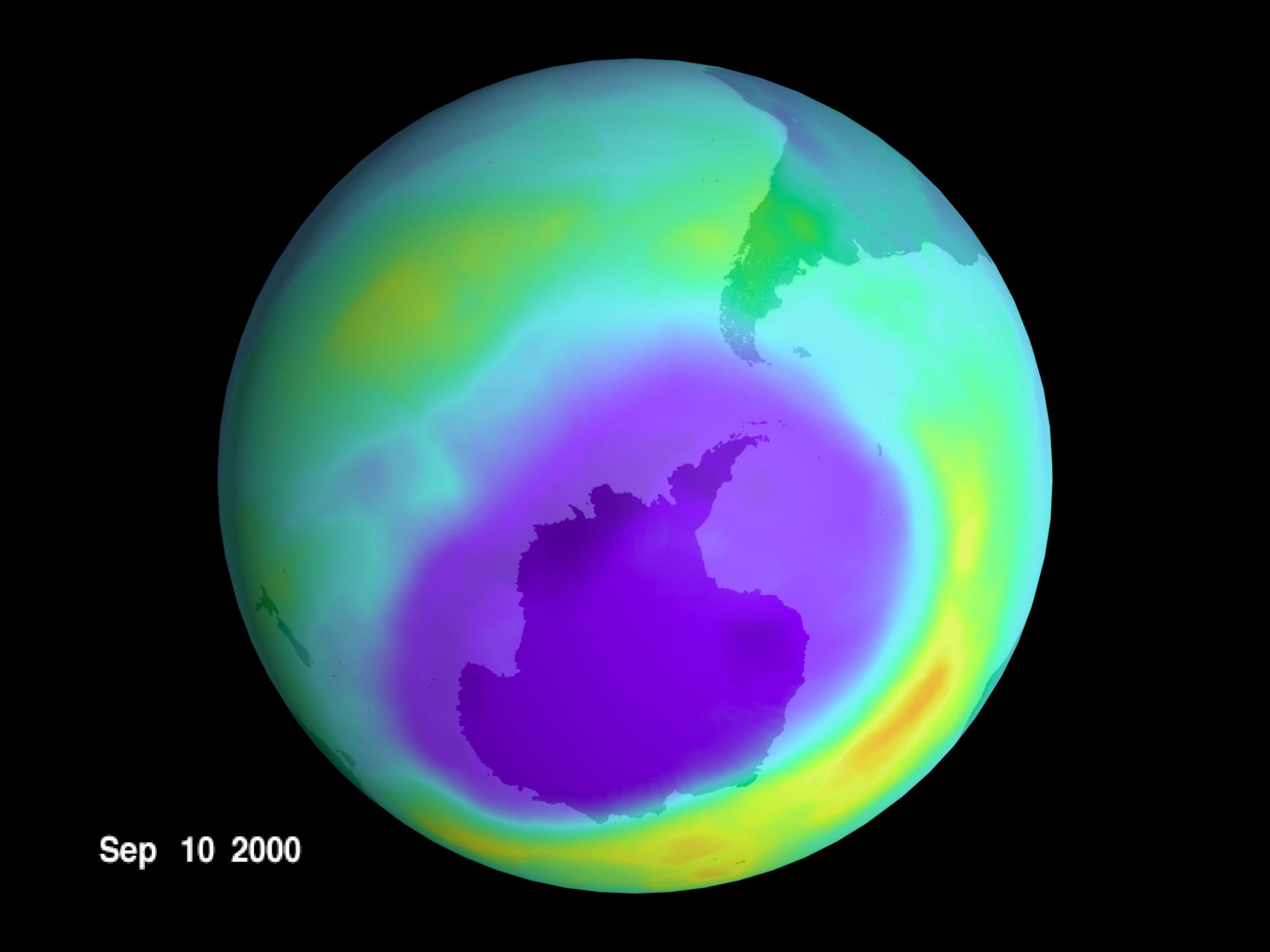Ozone hole-forming chemical emissions increasing and mysterious source in East Asia may be responsible
'This is atmospheric detective work at its finest'

Emissions of some ozone-depleting Chlorofluorocarbons (CFCs) have shot up in the past six years, despite a decades-old treaty banning them altogether.
“Atmospheric detective work” has pinpointed a mysterious new source in East Asia that might be responsible for this surge in destructive chemicals.
The ozone layer protects the Earth from the sun's harmful UV radiation. Its decline sparked a wave of concern in the 1980s about rising rates of skin cancer.
When scientists first discovered the ozone layer hole in 1985, they quickly attributed its appearance to the presence of CFCs in the atmosphere.
They had been widely used as refrigerants, propellants and aerosol applications and solvents.
Having established the threat, the world rapidly mobilised to bring the Montreal Protocol into effect just two years later, an act that saw CFCs being phased out.
Widely regarded as one of the most successful environmental actions ever, the protocol has been credited with the ozone hole shrinkage observed in the decades that followed.
However, in a new paper published in the journal Nature, an international team of scientists report an unexpected finding of CFC-11, one of the major ozone-depleting chemicals.
The rate of this substance’s decline in the atmosphere has slowed by approximately 50 per cent since 2012.
This suggests new CFC sources have emerged in recent years, hampering the international effort to completely rid the atmosphere of these chemicals.
If their results are accurate, then they indicate foul play. There has been no additional CFC production reported to the United Nations Environment Programme’s Ozone Secretariat in the past six years.
If there had been it would be breaking the terms of the Montreal Protocol.
“This is atmospheric detective work at its finest,” said Professor Piers Forster, a climate scientist at the University of Leeds who was not involved in the work.
“Looking at detailed observations of north-south gradients in gases and combining this with careful atmospheric chemistry modelling, the authors have pinpointed a new source of CFC-11 to East Asia, breaking Montreal Protocol rules. Such detailed forensic analysis really shows how far our science has come. I’m hopeful we can quickly find the source and close it down.”
Led by Dr Stephen Montzka from the US National Oceanic and Atmospheric Administration, the researchers used data from remote monitoring sites around the world to determine the rate of decline in atmospheric CFC-11 concentrations.
To their surprise, they found that while the decline was constant from 2002 to 2012, it slowed significantly after 2012.
Rather than having anything to do with historical trends, the scientists’ simulations suggested this decline was due to an increase in CFC-11 production since 2012.
By taking into account air flow into the regions where their monitoring stations were located, the scientists concluded East Asia was the most likely source of this fresh wave of emissions, although the exact cause is unclear.
Though inadvertent production or the release of CFCs from the demolition of buildings are possibilities, the scientists concluded these were unlikely to produce the substances on the scale suggested by their work.
It comes after Nasa satellites provided the first direct evidence the ozone hole had shrunk in January, a finding welcomed by Dr Jon Shanklin – one of the meteorologists who first discovered the ozone hole – as a “definite good news story”.
However, scientists are concerned that this good news may be shortlived if efforts are not taken to curb any persistant sources of CFCs.
“This is a worrying result,” said Professor Joanna Haigh an atmospheric physicist at Imperial College London. "CFCs were responsible for the development of the springtime Antarctic ozone hole and a very slow reduction in its area has been cautiously ascribed to the Montreal Protocol beginning to take effect.

“However, at other locations, observations have suggested an unexplained continuing decline and these now need to be reassessed in the light of this new evidence.”
Other researchers were optimistic about the future of the ozone layer, despite the unexpected results reported by Dr Montzka and his colleagues.
Professor Martyn Chipperfield, an atmospheric chemist at the University of Leeds, said: “The observations are puzzling rather than alarming. Atmospheric chlorine levels are still decreasing but more slowly than expected. This will cause some delay in the recovery of the ozone layer from past depletion, but that recovery will still happen.
“Nevertheless, scientists and policy makes will want to understand the cause of these unexpected CFC-11 emissions.”
Researchers have highlighted the importance of monitoring systems both for scientific purposes and to ensure that environmental treaties and laws are complied with on a global scale
“It is reassuring that the observations are able to detect these small, unexpected changes in CFC decay rates and alert us to this issue in good time,” said Professor Chipperfield.
Join our commenting forum
Join thought-provoking conversations, follow other Independent readers and see their replies
Comments
Bookmark popover
Removed from bookmarks